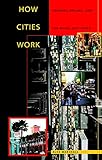How Cities Work : Suburbs, Sprawl, and the Roads Not Taken / Alex Marshall.
Material type: TextSeries: Constructs SeriesPublisher: Austin : University of Texas Press, [2021]Copyright date: ©2001Description: 1 online resource (272 p.)Content type:
TextSeries: Constructs SeriesPublisher: Austin : University of Texas Press, [2021]Copyright date: ©2001Description: 1 online resource (272 p.)Content type: - 9780292748323
- 307.76
- online - DeGruyter
| Item type | Current library | Call number | URL | Status | Notes | Barcode | |
|---|---|---|---|---|---|---|---|
 eBook
eBook
|
Biblioteca "Angelicum" Pont. Univ. S.Tommaso d'Aquino Nuvola online | online - DeGruyter (Browse shelf(Opens below)) | Online access | Not for loan (Accesso limitato) | Accesso per gli utenti autorizzati / Access for authorized users | (dgr)9780292748323 |
Frontmatter -- CONTENTS -- INTRODUCTION THE SEX OF CITIES -- CHAPTER 1 A TALE OF TWO TOWNS -- CHAPTER 2 THE END OF PLACE -- CHAPTER 3 THE DE CONSTRUCTED CITY -- CHAPTER 4 TRADING PLACES -- CHAPTER 5 JACKSON HEIGHTS -- CHAPTER 6 THE MASTER HAND -- CHAPTER 7 PORTLAND AND OREGON -- CHAPTER 8 NO PLACE CALLED HOME -- CONCLUSION GETTING THERE -- ACKNOWLEDGMENTS -- NOTES -- SELECTED REFERENCES -- INDEX
restricted access online access with authorization star
http://purl.org/coar/access_right/c_16ec
Do cities work anymore? How did they get to be such sprawling conglomerations of lookalike subdivisions, megafreeways, and "big box" superstores surrounded by acres of parking lots? And why, most of all, don't they feel like real communities? These are the questions that Alex Marshall tackles in this hard-hitting, highly readable look at what makes cities work. Marshall argues that urban life has broken down because of our basic ignorance of the real forces that shape cities-transportation systems, industry and business, and political decision making. He explores how these forces have built four very different urban environments-the decentralized sprawl of California's Silicon Valley, the crowded streets of New York City's Jackson Heights neighborhood, the controlled growth of Portland, Oregon, and the stage-set facades of Disney's planned community, Celebration, Florida. To build better cities, Marshall asserts, we must understand and intelligently direct the forces that shape them. Without prescribing any one solution, he defines the key issues facing all concerned citizens who are trying to control urban sprawl and build real communities. His timely book will be important reading for a wide public and professional audience.
Mode of access: Internet via World Wide Web.
In English.
Description based on online resource; title from PDF title page (publisher's Web site, viewed 26. Apr 2022)


